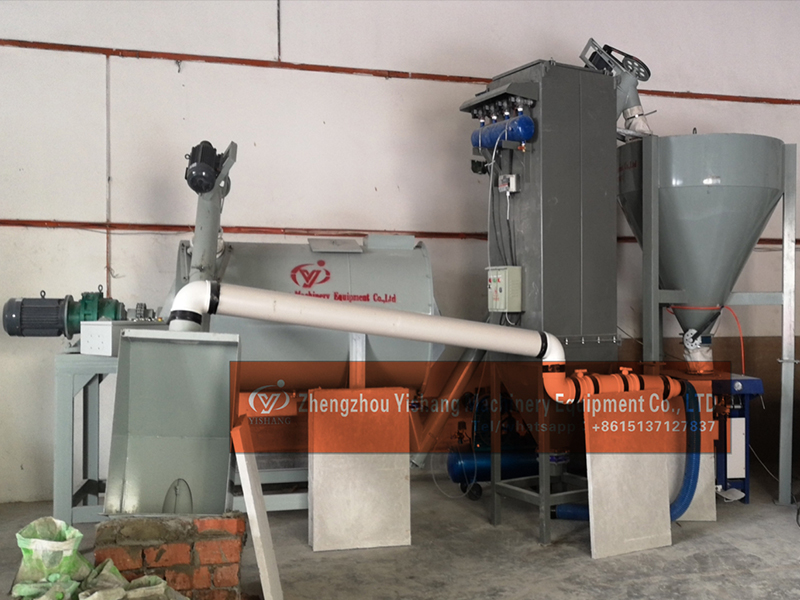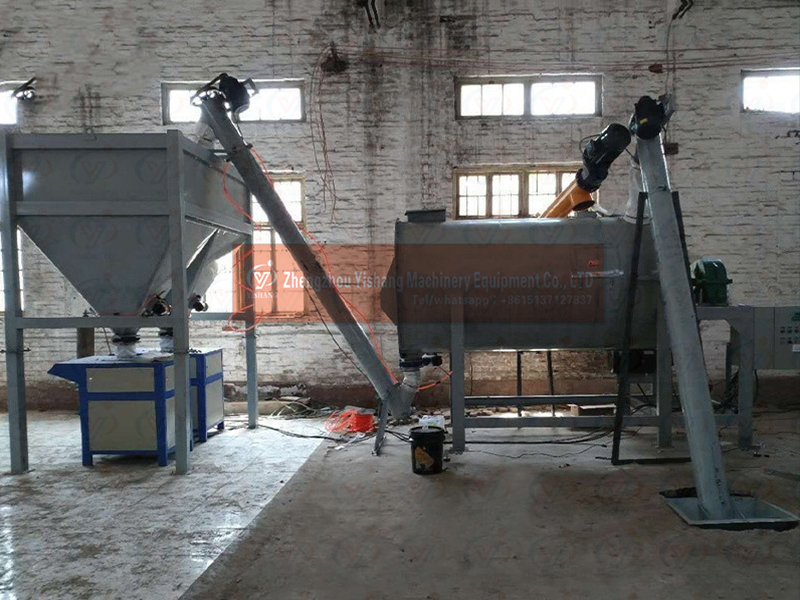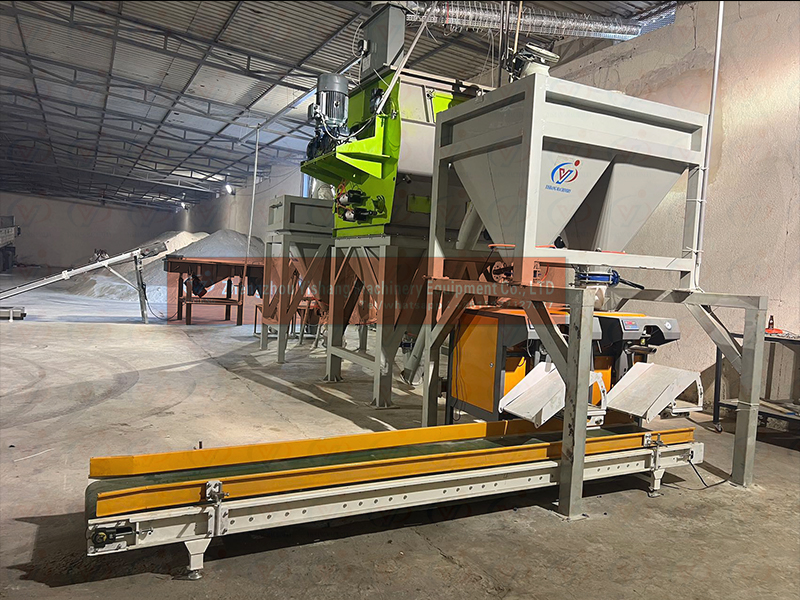How to Choose the Right Capacity for Your Small Dry Mortar Mixing Machine: A Practical Guide for Dry Mortar Businesses
 2025-10-29
2025-10-29

Selecting the correct capacity for a Horizontal Ribbon Mixer is a critical decision that impacts your production efficiency, operational costs, and ability to meet market demand. A machine that is too small will create bottlenecks, while one that is too large will lead to unnecessary capital expenditure and inefficient energy use.
This guide will help you determine the ideal capacity for your small dry mortar mixing machine by focusing on four key areas.

Start by quantifying your current and near-future production needs.
Daily/Weekly Output Volume: How many tons of finished mortar (e.g., tile adhesive, plaster, grout) do you need to produce per day or per week?
Product Variety: How many different recipes do you plan to produce? Frequent product changeovers require smaller batches to minimize cross-contamination and reduce waste when switching between formulas.
Batch vs. Continuous Production: Do you need to produce large volumes of a single product continuously, or smaller, customized batches for various clients?
Action Step: Calculate your required hourly output. For example, if you need 5 tons per day and plan to run two 4-hour shifts, you need a machine that can produce around 0.625 tons per hour. This is your primary target.

It is crucial to distinguish between the total volume of the mixer and its effective working capacity.
Total Volume: This is the physical internal volume of the mixing chamber (e.g., 2 m³).
Working Capacity (Batch Capacity): This is the actual volume of dry mortar the machine can mix effectively in a single batch. For ribbon blenders, this is typically 50% - 65% of the total volume to allow for proper movement and homogenization of the powder.
Key Consideration: A 1 m³ mixer does not hold 1 ton of material. Dry mortar has a bulk density of approximately 1.2 - 1.8 tons/m³. Therefore, the batch weight capacity is:
Batch Weight (tons) = Working Capacity (m³) x Bulk Density (t/m³)*Example: A mixer with a 1 m³ total volume has a ~0.6 m³ working capacity. With a material density of 1.5 t/m³, its batch weight is 0.6 x 1.5 = 0.9 tons per batch.*

Combine your output needs with the machine's operational cycle to find the right fit.
A standard mixing cycle for a horizontal ribbon mixer is 5 to 10 minutes (loading, mixing, discharging). Let's use a 7-minute cycle as an average.
Batches per Hour: 60 minutes / 7 minutes per batch ≈ 8 batches per hour.
Required Batch Size: Use your required hourly output from Step 1.
Batch Size (tons) = Required Hourly Output (t/h) / Batches per Hour
Calculation Example:
If you need 2 tons per hour:
Batch Size = 2 t/h / 8 batches/h = 0.25 tons per batch.With a material density of 1.5 t/m³:
Required Working Capacity = 0.25 tons / 1.5 t/m³ ≈ 0.17 m³.
Therefore, a small mixer with a total volume of around 0.3 - 0.5 m³ would be suitable.

Your mixer should be an asset that grows with your business, not a constraint.
Future Expansion: Are you planning to introduce new products or increase your market share in the next 1-2 years? Consider investing in a machine with 20-30% more capacity than your current calculations indicate.
Operational Flexibility: A slightly larger machine allows you to fulfill unexpected large orders without running multiple extended shifts. It also provides buffer capacity for testing new formulas without disrupting your main production schedule.
Calculate your target hourly output (e.g., 2 t/h).
Confirm the bulk density of your primary mortar mixes (e.g., 1.5 t/m³).
Determine the required batch weight (Target Output / Batches per Hour).
Calculate the required working capacity (Batch Weight / Bulk Density).
Select a mixer whose working capacity (50-65% of total volume) meets or slightly exceeds your calculated need.
Verify that the supporting equipment (feeder, packer, compressor) can match the mixer's cycle time.
By following this structured approach, you can move beyond guesswork and make a confident, data-driven investment in a Horizontal Ribbon Mixer that perfectly aligns with your business objectives, ensuring productivity and profitability from day one.+8615137127837

Whatsapp:++8615137127837
WechatID:+8615137127837
Email:[email protected]
Alibaba Store:
https://zzyishang.en.alibaba.com